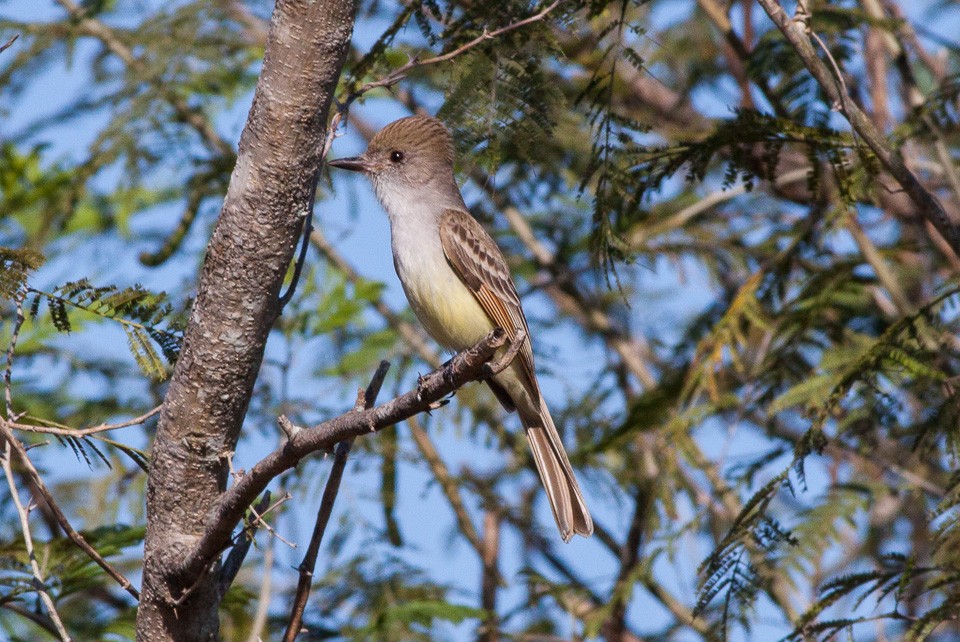Nutting's Flycatcher
A species of New World Crested Flycatchers Scientific name : Myiarchus nuttingi Genus : New World Crested Flycatchers
Nutting's Flycatcher, A species of New World Crested Flycatchers
Botanical name: Myiarchus nuttingi
Genus: New World Crested Flycatchers
Content
Description General Info
Description
Nutting's flycatcher (Myiarchus nuttingi) is a passerine bird in the tyrant flycatcher family. It breeds in semi-arid desert scrub and tropical deciduous forest from western Mexico to northwest Costa Rica. It is normally a year-round resident, but has been known as an occasional vagrant to southern California and Arizona–(southeastern, central, and western), in the United States. It is named for the zoologist Charles Cleveland Nutting. Nutting's flycatchers build their nests in a tree cavity or similar natural or man-made hole, and the normal clutch is three to five eggs. Adult Nutting's flycatchers are 18–19 cm long and weigh 21-23 g. The upper parts are olive brown, with a darker head and short crest. The breast is gray, and the belly is a softly-colored yellow. The brown tail feathers are extensively rufous, the wings have rufous outer webs, and there are two dull wing bars. The sexes' markings are similar. A Nutting's flycatcher may be distinguished from other very similar Myiarchus species by its call, a sharp weeep. Although this species is primarily an insectivore, catching flies in undergrowth, it will also eat berries. 
Size
18-19 cm (7-7.5 in)
Life Expectancy
12 years
Nest Placement
Cavity
Feeding Habits
Nutting's Flycatcher, primarily feeds on insects and occasionally consumes berries. It employs active foraging and expert aerial hunting techniques, often during daylight hours. This bird has a distinctive preference for certain insects, using its agility to capture prey in flight.
Habitat
Nutting's Flycatcher typically inhabits tropical deciduous forests and thorn woodlands, favoring arid to semi-arid scrubby woodlands. These birds are also found in semi-open areas rich with scrub and small trees, including the interior and edges of both deciduous and evergreen forests with secondary growth. Their range spans from sea level up to elevations of 1800 meters, across broader geographical regions of tropical environments.
Dite type
Insectivorous
General Info
Feeding Habits
Bird food type
Bird Feeder Type

Platform
Sounds
Call
Recording location: Mexico
Species Status
Not globally threatened.
Scientific Classification
Phylum
Chordates Class
Birds Order
Perching birds Family
Tyrant flycatchers Species
Nutting's Flycatcher 